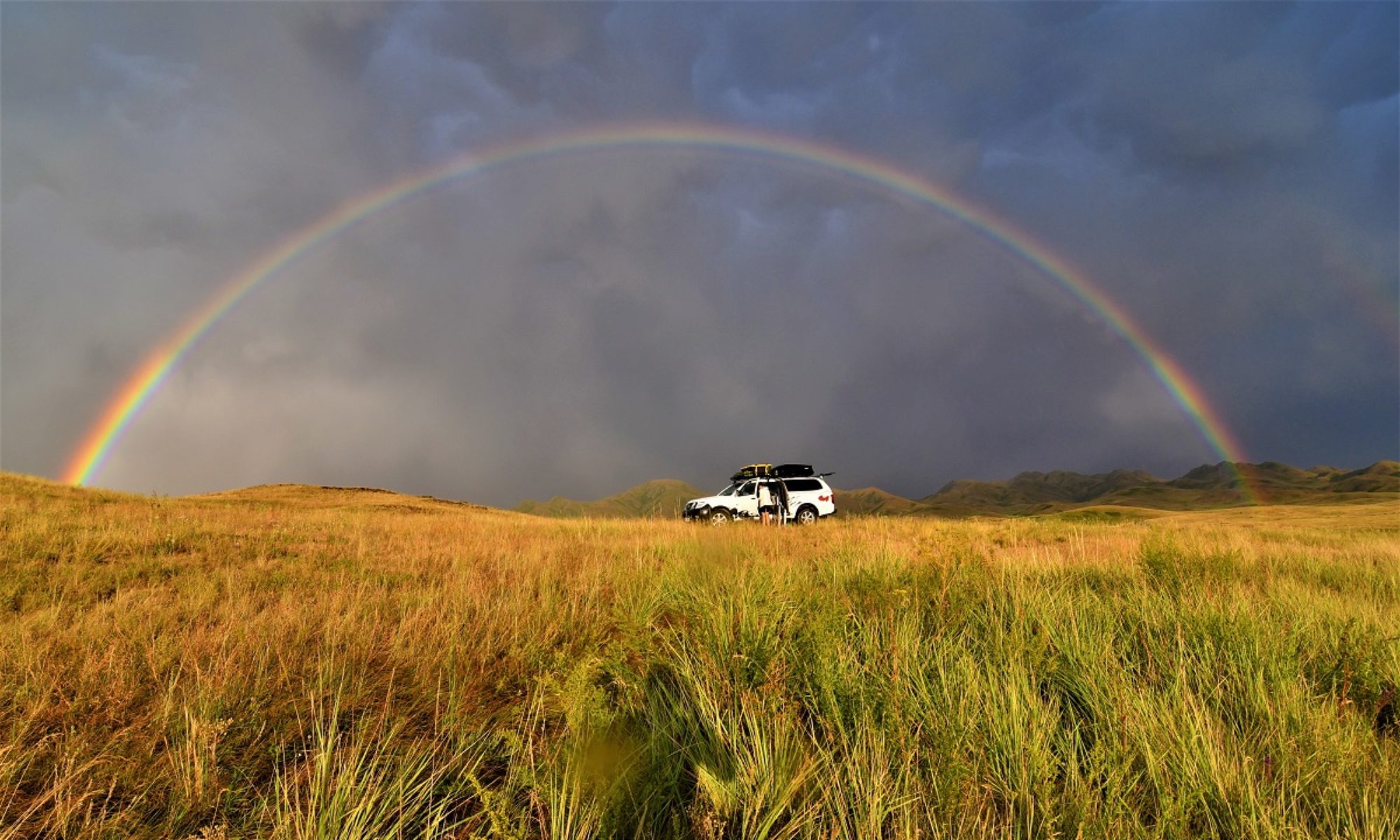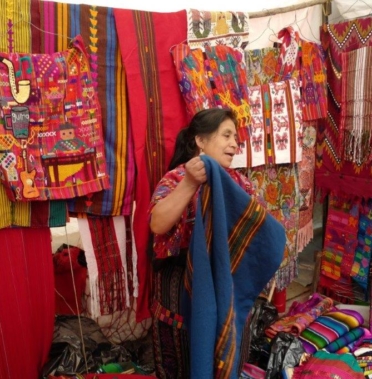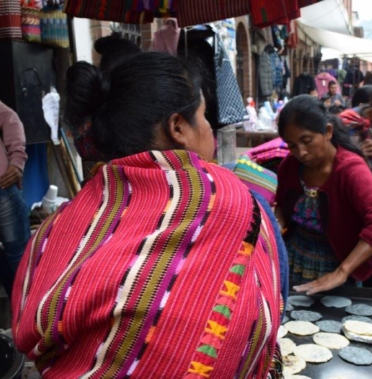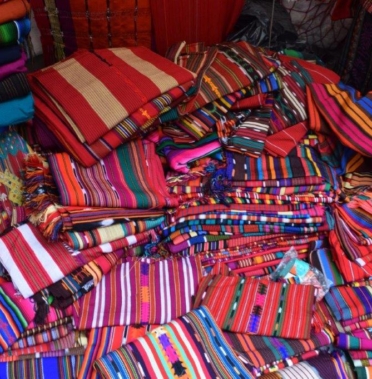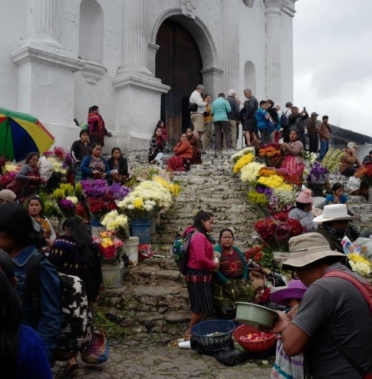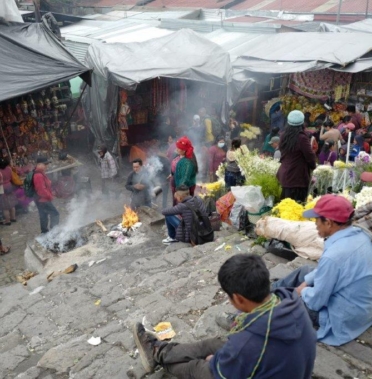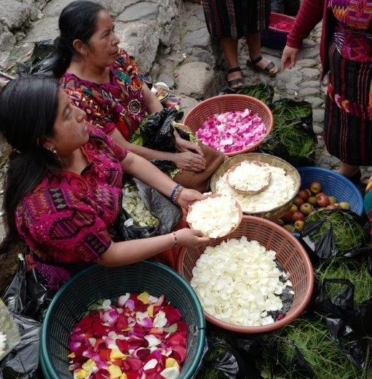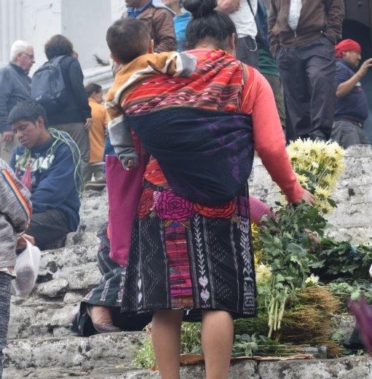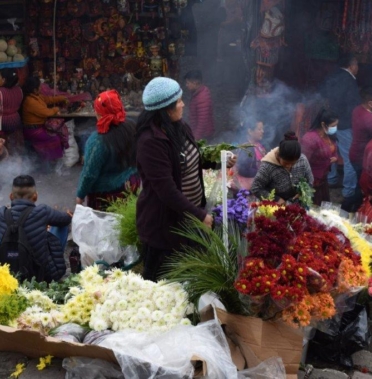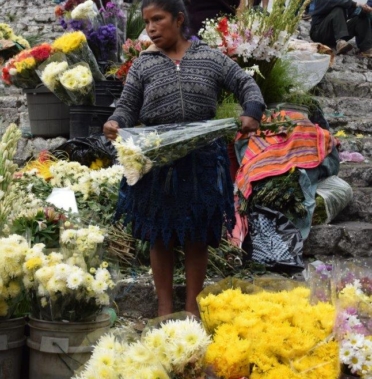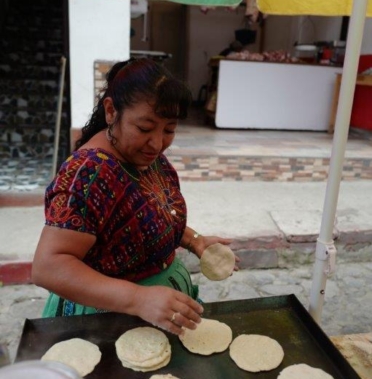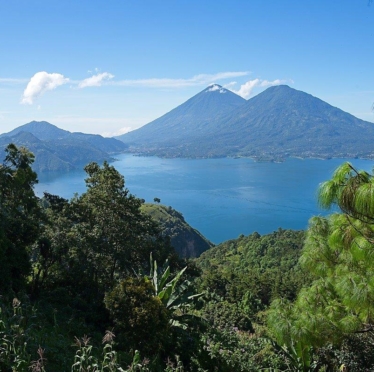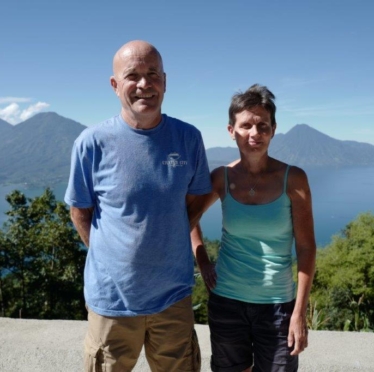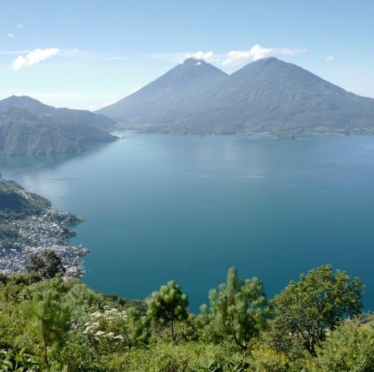The next morning we drove to the town of Chichicastenango, (nicknamed “Chichi” by the locals) in the Guatemalan highlands, only 88km away but the road was bad and very twisty (with the usual humps when going through small settlements and at most unexpected places) so it took 2 hours.
This is an old town perched on top of a very steep hill. Luckily we found a “parqueo” just at the entrance of town and this saved us having to drive in narrow streets jam packed with traffic and people.
The town is famous throughout the country for its market( and the largest in Central America) held on Thursdays and Sundays and both merchants and customers come from all over. There is everything you need from food, home-ware, flowers, second hand goods, handy-craft and more!
This is also the place where the local Maya indigenous groups come to sell their wares. Most women are wearing traditional clothes and it is very colourful.
[Click on image to open the gallery]
We then drove on to Panajachel, small town right on the shore of Lake Atitlan. We arrived from an elevated position and had a nice view over the lake and the two volcanoes dominating it. The lake actually sits in the crater of a massive volcano.
[click on the image to open the gallery]
Lake Atitlan is one of the most visited tourist attractions in Guatemala and it was the week end so plenty of tourists and visitors around. We needed to find somewhere to stay for the night and initially thought we would camp near the beach but it was too crowded and noisy.
As we made our way out of town, we saw a small restaurant with a grassy area next to it, all enclosed with a gate at the side. We asked the owner if we could camp and he agreed. There was even an outdoor toilet we could use : perfect. We ended up having dinner at the restaurant: Tacos with a pork stew meat served on corn tortillas.( the tortillas are heated on a hot griddle before adding the filling. Corn tortillas have a distinctive smell and taste. There are always lots of street food vendors everywhere you go in Mexico and Central America and you get to recognise which tortillas they are using. You sometimes have the option to have wheat flour tortilla instead. (those are the one you find in supermarkets in Europe).

